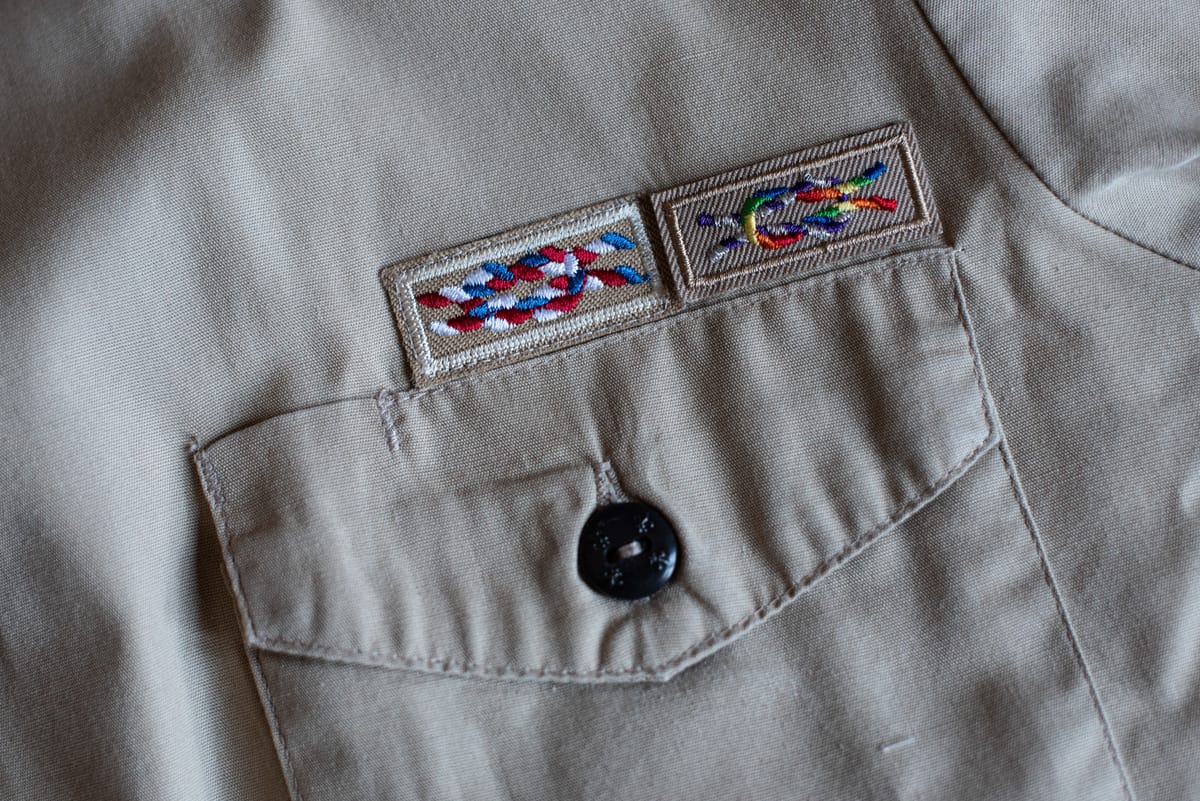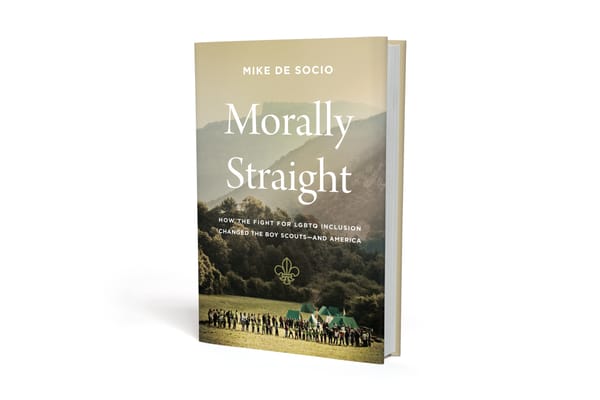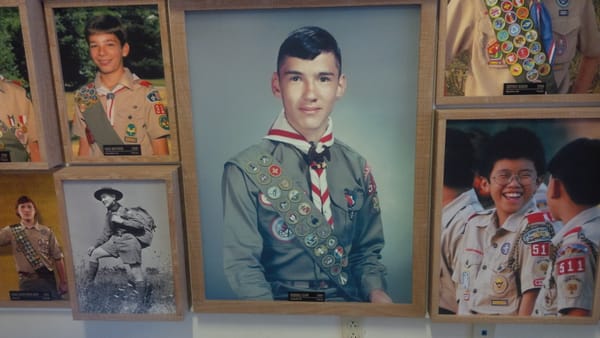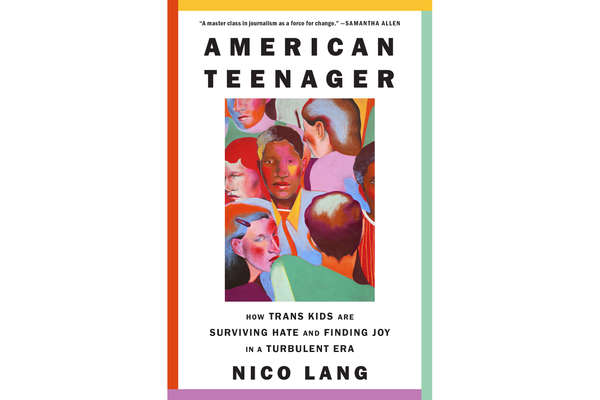An (unofficial) uniform guide to LGBTQ+ pride
Can you wear rainbow swag on your Scout uniform? How Scouters make decisions about what to wear, and when.

Nothing inspires strong opinions quite like the Scouting uniform. And LGBTQ+ pride accessories—think rainbow patches, neckers, woggles, loops and more—are no exception.
- Why it matters: Although BSA uniform rules may not always sanction these items, many Scouters wear them anyway, and see them as a quietly powerful way to make LGBTQ+ youth feel welcome.
But what you should you wear, and when? I spoke to a range of Scouters to learn more about how they make decisions around wearing rainbow swag. Once again, this is not an official rulebook (if you want rules, go here), but rather a collection of perspectives and practices from Scouters in the field.
What are we talking about when we talk about LGBTQ+ uniform items?
Chris Hoffman, a volunteer with the Longhorn Council in north Texas, told me about the array of LGBTQ+ pride accessories he might choose to add to his uniform at any given time:
- A name tag that includes his pronouns
- The Inclusive Scouting Award (the rainbow square knot patch pictured above)
- A rainbow woggle to go with a neckerchief
- A rainbow pin of the Vulcan salute
That's not an exhaustive list of what's available to show LGBTQ+ pride. Here are some other common options:
- Rainbow neckerchiefs, like this one from Scouts UK
- Rainbow patches like those given out at the 2023 National Jamboree
- Rainbow epaulets
- Rainbow bracelets like those given out at several national Scouting events
'There are a lot of ways to wear the uniform'
Let's get something out of the way upfront: LGBTQ+ pride items are not the only area where Scouts and Scouters often decide to customize their uniform.
Gary Carroll, the Scout executive at Cascade Pacific Council, reminded me that units have long made their own judgement calls about when and how to wear the uniform. Some opt for full Class-A for all activities, while others are okay with their Scouts pairing uniform shirts with jeans or basketball shorts in some scenarios.
"At the end of the day, we’ve got to use some common sense," Carroll said. He encourages Scouters to ask themselves: "What are we doing? Is it appropriate for the activity we’re doing?”
Stacey Capell, a Scoutmaster in the Washington, D.C. area, echoes this point. Her decisions on what pride swag to wear depend on the situation.
"I make a point to wear something rainbow somewhere on my person all the time everywhere, both in and out of Scouting," she said, but it doesn't always look the same.
At most Scout meetings and events, she wears the Inclusive Scouting Award and a rainbow woggle. She's also got rainbow epaulets and a rainbow neckerchief she adds sometimes. Again, it depends on the context.
"If I’m running a first aid merit badge workshop, you won’t find me decked out in rainbows from head to toe because that’s not why I’m there," Capell said. "On the other hand, if I’m volunteering as color guard for the local pride festival, you can bet my uniform accessories will be all sorts of fabulous right down to my rainbow shoelaces!"
There's room for individual expression
When I asked on Facebook for thoughts on adding LGBTQ+ pride to the uniform, I got a huge range of responses, which underscores my next point: Scouts and Scouters can make their own (informed) decisions about how to express themselves when wearing the uniform.
Here too, Carroll urges common sense. "Personally, my philosophy is that folks should wear a uniform and do it in a way that represents themselves as well as the organization and the unit they’re in, in a positive way," he said. "We want folks to look good. We want them to take care of their appearance."
Naturally, that's going to look different for each person who wears the uniform. And for many LGBTQ+ Scouts, Scouters and allies, representing themselves authentically means donning a bit of rainbow from time to time.
Pride does not (always) equal politics
I can already hear the objections: "Pride swag is political and has no place in Scouting." But despite the politicization of LGBTQ+ rights, the community itself and its members are not merely a political statement.
"A person’s identity is not politics. And a person’s self expression isn’t inherently political," Carroll said. "If we have recognizable symbols that are not harmful, and actually act toward inclusion, then absolutely I would support anyone using them."
About that rainbow square knot patch
Known as the Inclusive Scouting Award, this patch is not an official part of the BSA uniform; it is produced and distributed by Scouts for Equality. But more than a few people think that should change.
"The BSA should figure out a way to make the knot an official part of the uniform," Carroll said, noting that many people are wearing it already and feel that it means a lot to them.
Hoffman has a similar perspective. "I have heard the complaint that the Inclusivity Knot is not official, and I get that. I wish it would be," he said. "To those who say I shouldn’t wear the knot because it isn’t official: I say that I wear it to let people know they are not alone."
Why LGBTQ+ uniform accessories matter
Hoffman is getting to a crucial point: Aside from self-expression, wearing these rainbow accoutrements can send a powerful signal to queer and trans youth who are unsure about their identity or whether it would be accepted in Scouting.
"When people see my pronouns [on my name tag,] they feel more comfortable talking with me about LGBTQ topics," he said.
Capell agrees: "You never know when you might encounter a person who is struggling and even if you never speak to them, seeing that little rainbow might help them to know that they are not alone," she said. "It’s such a simple gesture but it really can make a world of difference!"




